Description
600 Seeds Red Burgundy Onion is a flavorful onion variety that grows into a 3-6-inch diameter, medium-size red onion with a deep purple-red skin and a white and pink flesh. This attractive and mild-flavored onion is a standard that stores well and is a delicious complement to just about any dish. This short-day onion also makes excellent scallions. Also Known As: Short Day Onion We ship in 1 business day. Shipped with USPS First Class Mail. Plant Name: Onion, Red Burgundy Latin Name: Allium cepa Days to Germinate: 7-14 Days to Harvest: 120-210 Germination Rate: 90% Test Date: 7/21 Growth Habit: Root USDA Zones: 2-12 Lifespan: Annual Country of Origin: United States Sunlight: Full Sun, Partial Shade GMO: No Pollination: Heirloom, Open-Pollinated Fungicide-Treated Seeds*: No Seeds Packed For**: 2022 *Fungicide-treated seeds protect the seedlings from diseases until they are up and growing. Do not eat treated seeds. **Seeds are freshly packed for the growing season of the year listed. Seeds are still viable beyond pack date. Store in a cool and dry location such as the refrigerator or basement to best preserve germination rates. Planting Instructions: Soil Preparation and Fertilizing: Choose an area with well-draining soil and receives full sunlight each day. When it is dry enough to not stick to garden tools, work the soil. Before seeding or transplanting, remove all rocks and trash from the soil, then dig or plow the soil 8-10 inches deep and rake up several times to break up large clods. At this point, you may optionally spread 2-3 pounds of a complete fertilizer per 100-square-feet of garden area. Measure and spread the fertilizer, then mix it with the top 3-4 inches of soil. Rake until smooth. Tip: If you live in an area with heavy clay or hard soil, add a 1 inch layer of compost to improve soil texture. Planting: Onions are a cool-season crop and can stand temperatures well below freezing. They may be planted from seeds, from small bulbs called sets, or from transplants. Seeding costs the least but takes longer before onions are ready. If starting onions from seeds, you may start them indoors about 6 weeks before you plan to transplant them to the garden. Onion seeds need temperatures of at least 50°F (10°C) to germinate properly. Or, you may direct sow onion seeds outdoors by planting them 1/4 inch deep during October through December (for biggest bulbs in a May/July harvest). Place the seeds 1 inch apart in rows spaced 1-2 feet apart. When the plants are about 6 inches high, thin them to 1 plant every 2-3 inches. You may eat the extra plants as green onions. When using sets or transplants, plant October-February (for biggest bulbs in May/July harvest). Plant onion sets with the point end up 3/4 inch deep and 3 inches apart. Try not to transplant onions more than 1 inch deep. As the cold chill of winter arrives, the onion plants go dormant. Then, as the temperatures and soil warm again in early spring, the onions come back to life. Seeds: Planting Depth: 1/4 inch Within-Row Spacing: 1 inch, then 2-3 inches Between-Row Spacing: 1- 2 feet Bulbs/Transplants: Planting Depth: 3/4 inch Within-Row Spacing: 3 inch Between-Row Spacing: 1- 2 feet Care During the Season: Watering: Watering once a week is usually enough in the Spring. You may need to water more often during dry, windy weather. Slow, deep watering helps the root system grow strong. Weeding and Pruning: Weeds are easy to pull or cut when they are 3-4 inches tall. Try not to let weeds or grasses grow large because they will compete with onions for nutrients. If hoeing to remove weeds, be careful not to cut too deeply as cutting the feeder rooters may slow the plant’s growth. It is better to pull by hand when possible. Fertilizing: When the onion plants have 5-6 leaves, you may optionally apply fertilizer again to help grow larger plants and bigger bulbs. Each leaf forms a ring in the onion bulb. More leaves means more rings and larger bulbs. Use about 1/2 cup of fertilizer for each 10 feet of onion row. Scatter the fertilizer evenly between the rows around the plants. Then water the onions after adding the fertilizer. Insecticides: Onions have few insect problems. However, thrips, which are very tiny insects, may be found between the center leaves. Many Insecticides are available in garden centers for use if needed. Bt-based insecticides and sulfur are organic options that can be used. Sevin is a synthetic insecticide option. Before using a pesticide, please read the label and always follow cautions, warnings and directions. Diseases: Diseases may be problem on onions. Brown leaf tips or brown spots on the middle and lower parts of leaves may be caused by plant diseases. Sulfur has fungicidal properties than can help control many diseases. Neem oil and other fungicides are available for use. Please always follow cautions, warnings, and directions. Harvesting: Onions seeded in October/December or set/transplanted in January/February should produce bulbs in May/July. If used as green onions, they may be picked from the time they are pencil size until they begin to form bulbs. For dry-bulb onions, let the plants grow larger. The onions are ready when the main stem begins to get weak and fall over. Pull the plants out of the soil. Leave them lying in the garden for about 1-2 days to dry. Then remove the tops and roots and let them keep drying in baskets or boxes. Onions can be stored in a refrigerator crisper or in a dry, airy place such as a in a wire net in the garage or carport. Nutrition Facts: Onion Amount Per 1 medium (2-1/2″ dia) (110 g) Calories 44 % Daily Value* Total Fat 0.1 g 0% Saturated fat 0 g 0% Polyunsaturated fat 0 g Monounsaturated fat 0 g Cholesterol 0 mg 0% Sodium 4 mg 0% Potassium 161 mg 4% Total Carbohydrate 10 g 3% Dietary fiber 1.9 g 7% Sugar 4.7 g Protein 1.2 g 2% Vitamin A 0% Vitamin C 13% Calcium 2% Iron 1% Vitamin D 0% Vitamin B-6 5% Cobalamin 0% Magnesium 2% *Percent Daily Values are based on a 2,000 calorie diet. Your daily values may be higher or lower depending on your calorie needs.

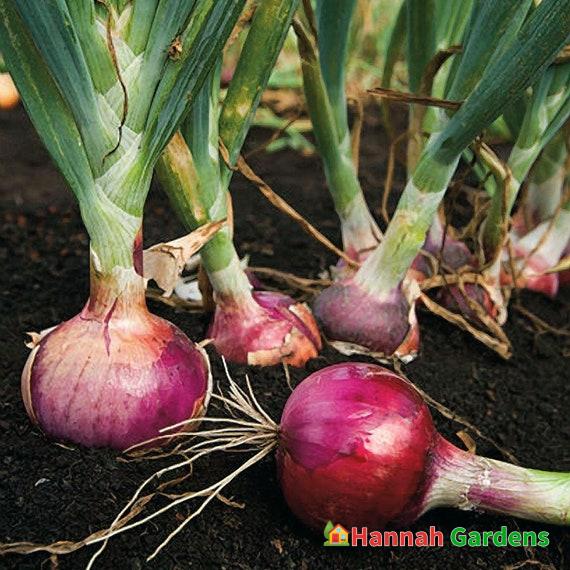
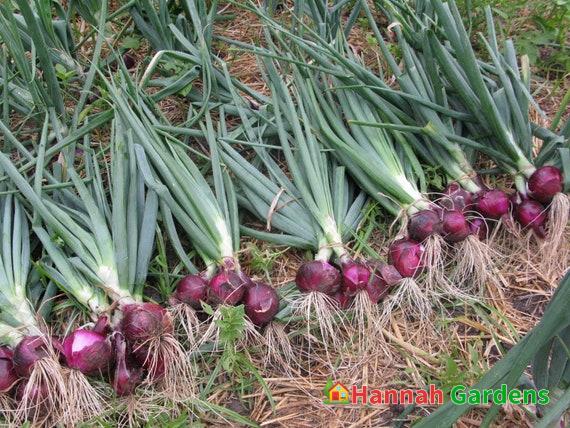
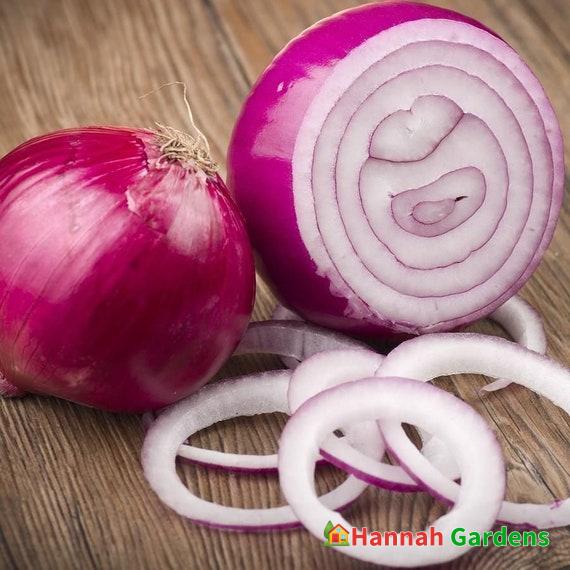
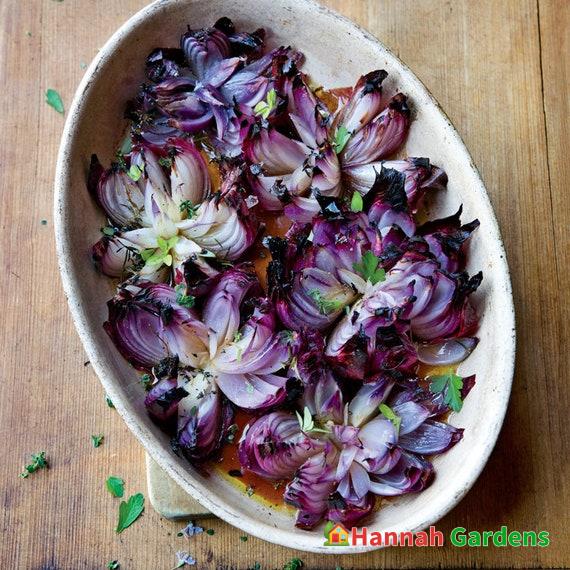
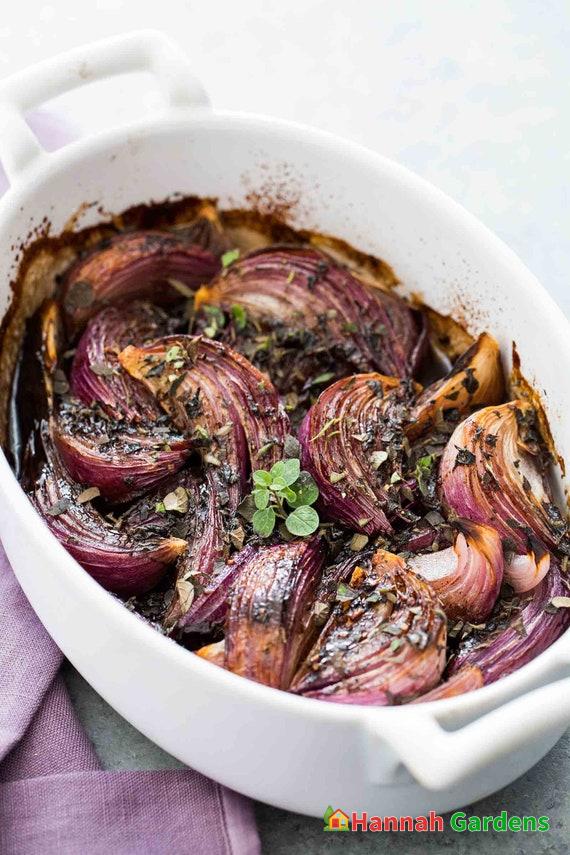
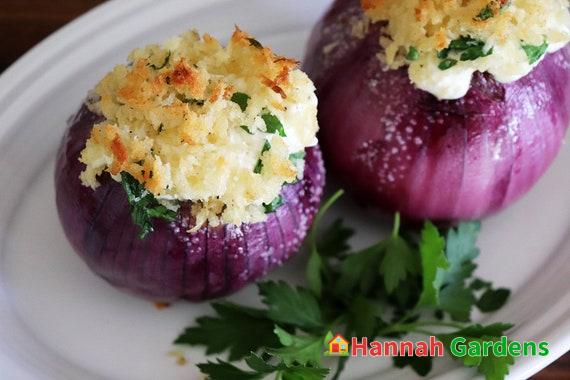
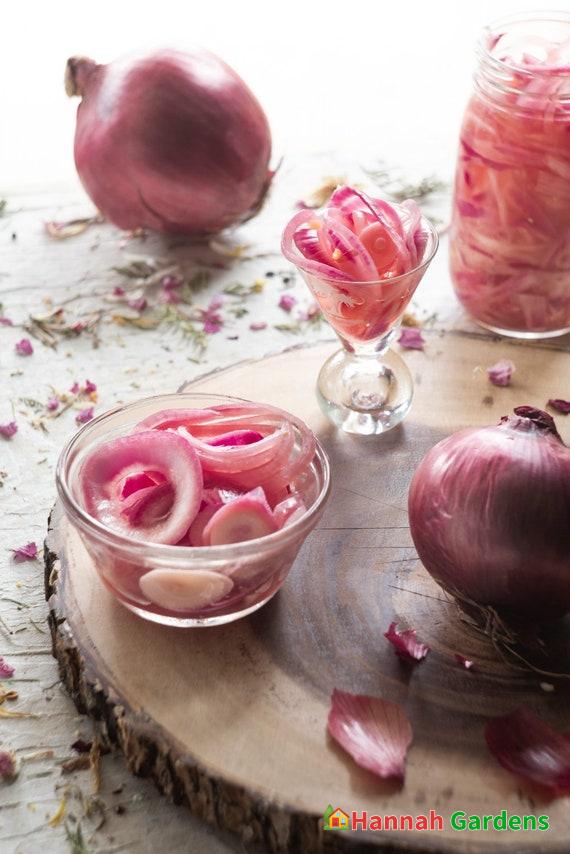
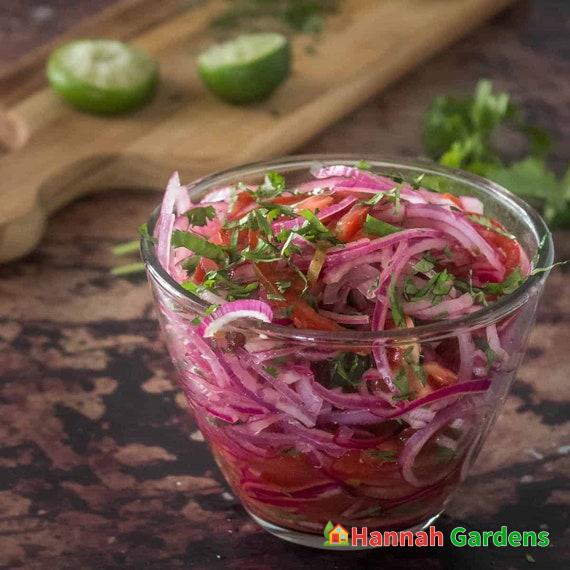
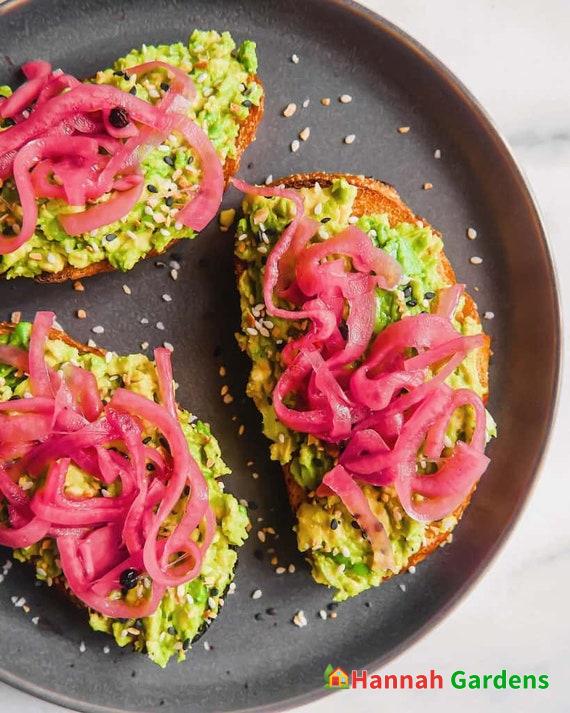
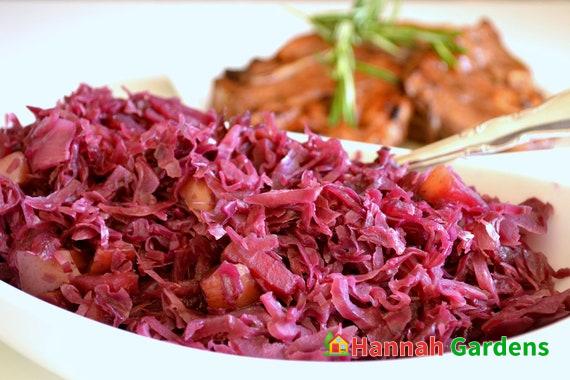
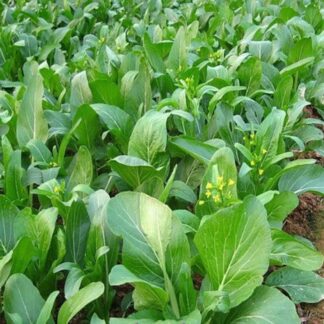
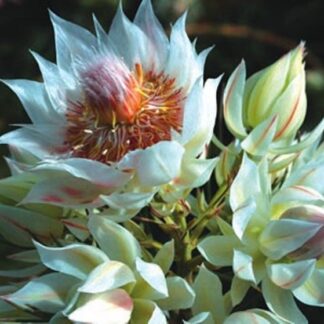
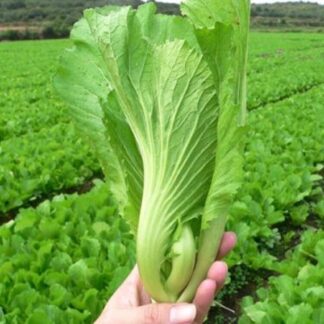
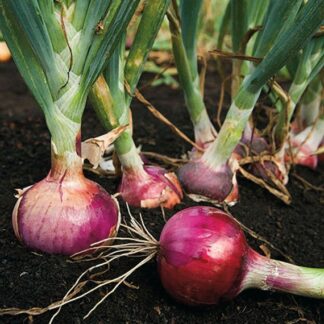
Reviews
There are no reviews yet.